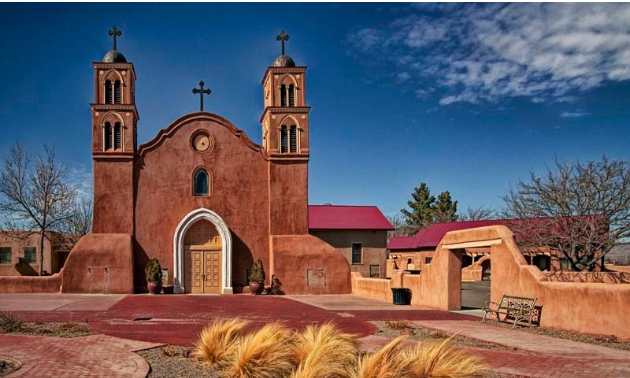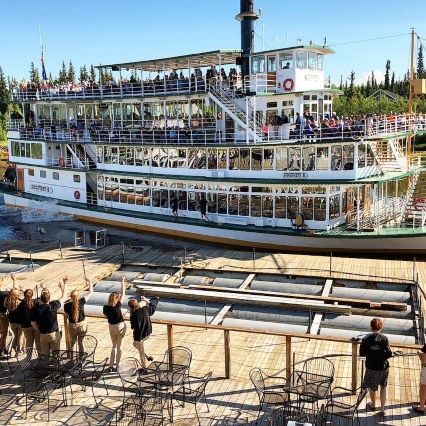Historical secrets await in Socorro, New Mexico
This town had re-created itself numerous times since its beginnings on the El Camino Real

Socorro, New Mexico, was once the home of the Piro Indians, a division of the Pueblo tribe. “They inhabited around two dozen villages along the Rio Grande,” said Katy Weaver Crumley, Tourism Clerk at the Socorro Heritage and Visitor Centre. “Spanish explorers made their way into the area from Mexico, following the Rio Grande and establishing the El Camino Real–the Royal Road into New Spain.”
El Camino Real acted as a trade route between the New Mexico Territory, Mexico and Spain. The Spanish explorers often visited the Piro villages. One explorer, Don Juan de Oñate, and his men were sheltered by the Piros. He named the land Socorro. Franciscan friars joined the town in the 1600s and built missions around the area. The San Miguel Mission was built around this time, and immigrant Spanish families made their livelihood around this mission.
Interesting discoveries
From there, Socorro’s history took an interesting turn. The original community disbanded due to wars and revolts and was not officially reformed until 1816. The civil war resulted in the day-long Battle of Valverde in February 1862. The Confederates won, and the city was liberated.
After the war, lead, zinc and silver were found in the area. The quiet town of Socorro was transformed into a wild mining town. “At this point, Socorro was full of mines, mills and smelters,” said Crumley. “In 1889, the School of Mines was built.” This school is now known as the New Mexico Institute of Mining and Technology.
However, its history of mining is not the most interesting part in Socorro’s tale. “For a brief time, Socorro declared itself a free sovereign territory from the State of New Mexico,” said Crumley. “An investigation by two attorneys in the 1950s determined that Socorro had virtually no laws—it was stated that ‘city laws were indistinguishable from mere scraps of paper.’ ” Essentially, Socorro was not part of New Mexico or of the United States.
As a separate entity from the U.S., Socorro had no taxes for a time. The county also had its own border control, and passports were required. For 25 cents, visitors could drive through the county. For 1 dollar, travellers could become citizens. Obviously, this is where the interest shifted from mining to tourism.
Visitors Welcome
While Socorro now is legally a part of the U.S., it still welcomes tourists and has since its sovereign time. “Socorro is a close-knit but welcoming community,” said Crumley. “Socorro is known for its friendly spirit, incredible birdwatching opportunities, world-class science and technology developments, fascinating cultural attractions and year-round outdoor recreation.”
One of the technological developments Crumley referred to occurred during World War II. Socorro housed temporary workers during the war, particularly those working at the nearby White Sands Missile Range. These workers dined on green chile burgers in the Historical District of Socorro at the Owl Bar and Café. While most of the workers were secretive about their jobs, some hinted that the residents should watch the sky around White Sands on the morning of July 16, 1945. The first atomic bomb was tested within eyesight of the town of Socorro, now called the Trinity Site. The Owl Bar and Café is still open, serving the same green chile burgers as it did in 1945.
The Historical District
With such a unique city history, Socorro’s historical district is a must-see destination. Visitors will find repurposed buildings from the city’s original foundations. “Socorro’s historic district brings together New Mexico culture and small-town charm,” said Crumley. “The historic Plaza remains a spot for community events. Events like Hot August Nights, Socorrofest, car shows, weddings, sports, and summer music and street dances are held there.”
“San Miguel Mission is a must-see in the district, with its beautiful architecture and rich history,” Crumley said. This is the Mission that supported the Spanish families in the 1600s. The historic district also holds a few parks, a handful of restaurants, a coffee shop, art galleries and the Capital Bar—Socorro’s last saloon.
Much of Socorro’s attractions are self-guided tours or open events. “There is a self-guided walking tour,” said Crumley. “It features all the historical buildings still standing in the area.” Visitors can pick up the guide from a stand in the Plaza. Both the Socorro County Chamber of Commerce or the City of Socorro Heritage and Visitor Center have copies of the tour.
The yearly battle of Valverde
Fort Craig was a Union Army post during the Civil War. It was built in 1854 along the El Camino Real near the Rio Grande in Socorro County and remains open to this day from sunrise to sunset. Interpretive signs walk visitors through the history of the area. Each year in February, the Battle of Valverde is re-enacted. The entire historic site is loved by both history buffs and explorers. Admission to the site is free. Camping is available nearby.






